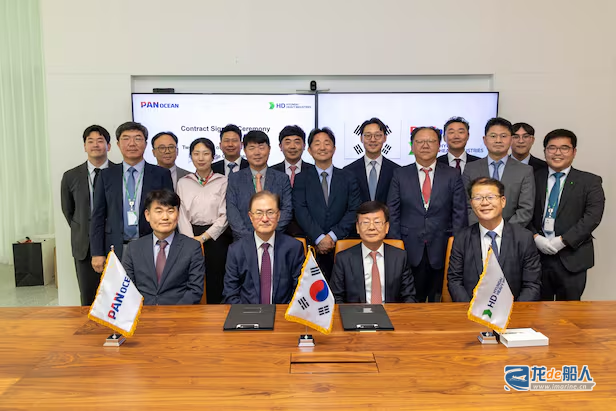Earlier this month, South Korea’s Pan Ocean Shipping announced the order of two very large crude carriers (VLCCs) to consolidate its market position in the liquid bulk shipping sector.

On June 13, Pan Ocean announced that it had signed a contract with HD Hyundai Heavy Industries on the 12th for the construction of two 300,000 DWT environmentally friendly VLCCs. The new vessels will be built at HD Hyundai Heavy Industries’ Ulsan shipyard and are scheduled for delivery in the third quarter of 2027. The price of each vessel is approximately US$127.5 million.
The new vessel is 328 meters long and 60 meters wide, featuring an environmentally friendly design that allows it to be converted to use next-generation environmentally friendly fuels—liquefied natural gas (LNG) and ammonia fuel—when necessary, thereby enabling it to flexibly respond to changes in global environmental regulations and fluctuations in energy demand. The design complies with the International Maritime Organization (IMO)’s strengthened greenhouse gas emission regulations—the Energy Efficiency Design Index Phase 3 (EEDI Phase 3) standard.
In addition, this type of vessel will also apply high-pressure selective catalytic reduction technology, which can meet the highest Tier III emission requirements in the nitrogen oxide emission control areas (ECA) specified by the International Convention for the Prevention of Pollution from Ships (MARPOL).
It is understood that Pan Ocean’s last VLCC order was placed in 2020, five years ago. At that time, Pan Ocean ordered two 300,000 DWT VLCCs from Daewoo Shipbuilding & Marine Engineering (now Hanwha Ocean) at a cost of US$90 million each.
Pan Ocean stated that, given the International Maritime Organization’s (IMO) strengthened environmental regulations, it expects the scrapping of older vessels to accelerate and therefore plans to enhance its competitiveness by investing in an environmentally friendly fleet in advance.
Clarkson data shows that there are a total of 108 old VLCCs over 20 years old (accounting for about 12% of the total), but only 88 new vessels are expected to be delivered by 2027, which will limit supply.
Pan Ocean officials said, “This newbuilding order will expand our VLCC fleet to four vessels, enabling us to maintain high-quality transport capacity and enhance competitiveness even in a challenging market environment. The company will continue to invest in environmental infrastructure and actively respond to uncertainties and volatility in the shipping market through business diversification.”


